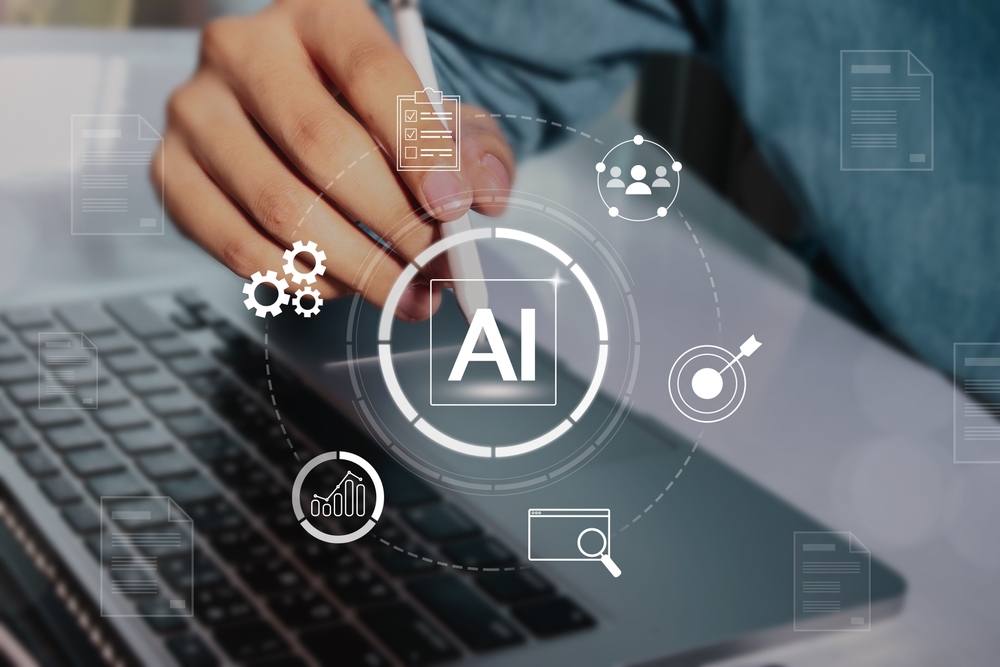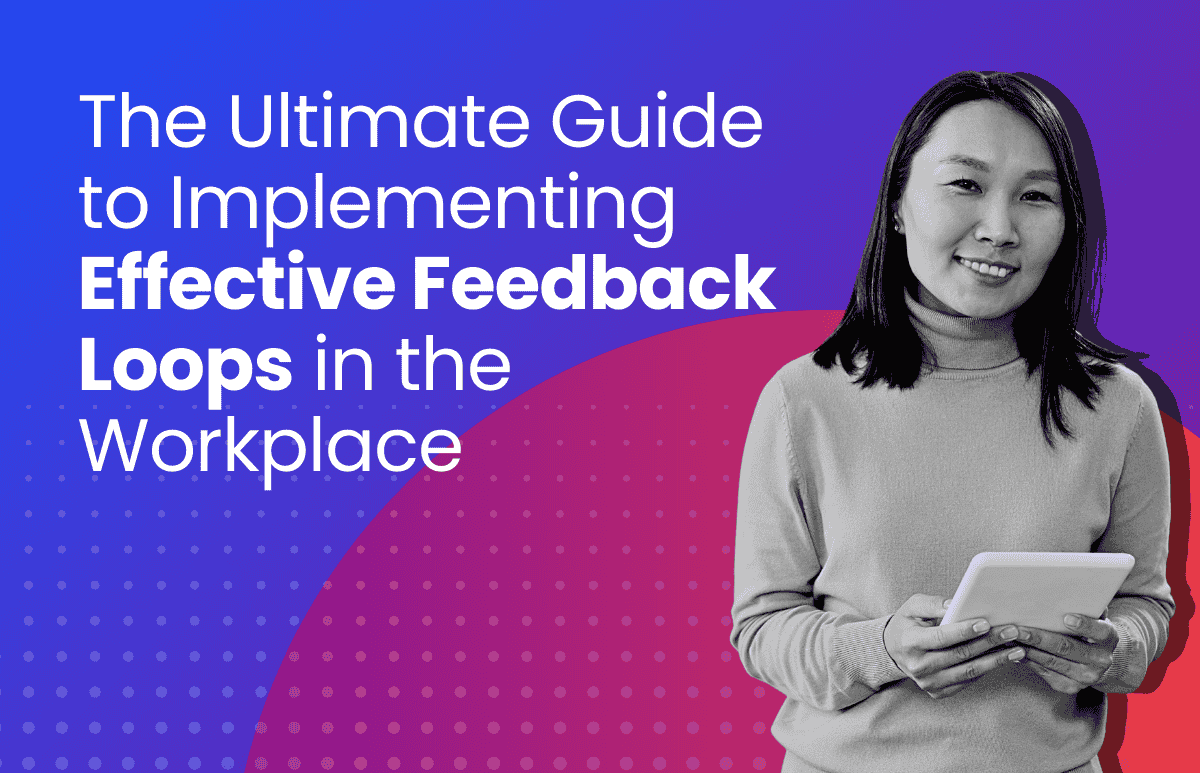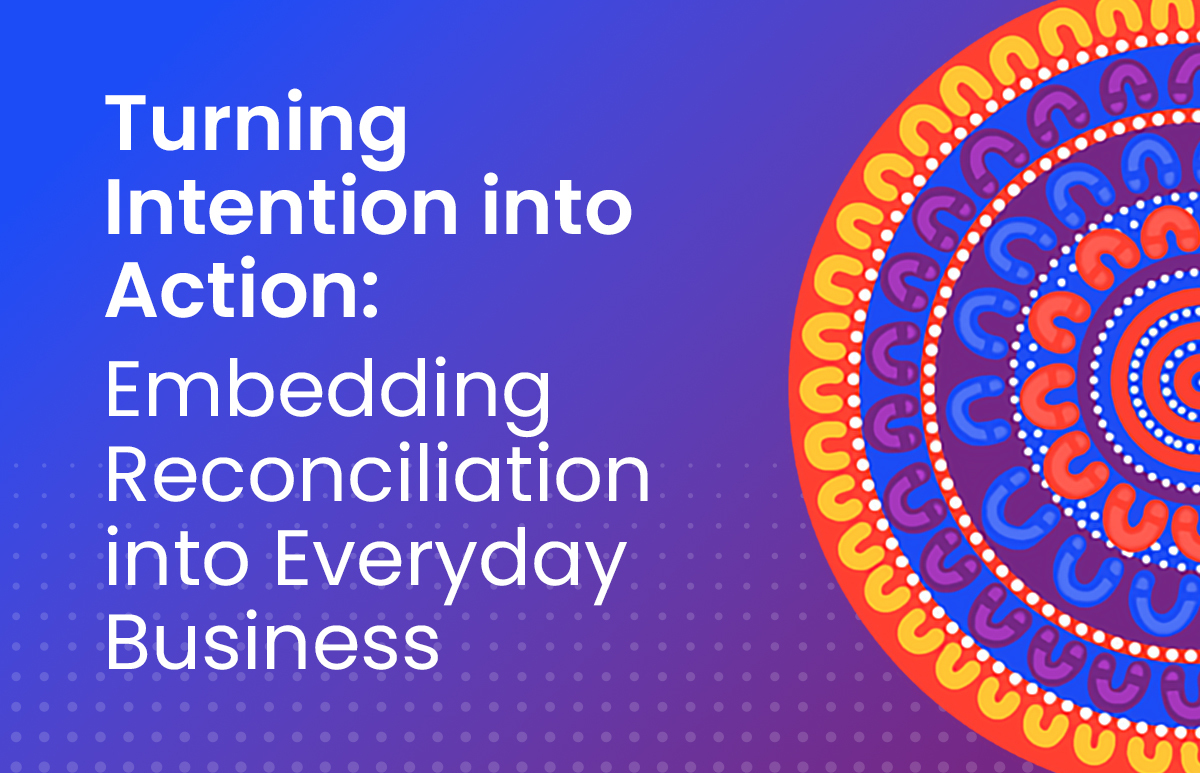Performance Management Technologies and Trends 2024
Performance management has become a pivotal practice for business processes in the modern working world.

Companies are letting people work from home or in the office, using better performance management technologies, and focusing on employee happiness.
This is shaking up how they manage their teams. To keep up, companies need to adjust how they train and support their people. As we enter 2024, a range of emerging technologies and best practices present new opportunities to transform performance management.
The shifting landscape of high-performance management
1. From annual reviews to continuous feedback
Annual performance reviews have been declining as organisations shift to more continuous models of feedback and coaching. Rigid yearly appraisals fail to meet the needs of today’s dynamic work environment. Meanwhile, real-time feedback loops better support employee development and engagement.
Ongoing conversations allow managers to provide guidance aligned with evolving objectives instead of confining feedback to one annual meeting. This facilitates more responsive adjustments and growth. Additionally, prompt feedback enhances workplace culture by fostering open communication and strengthening relationships.
Regular feedback unlocks insights to develop talent and boost engagement. As more organisations adopt these tools and see results, traditional annual reviews will likely become obsolete.
2. Aligning individual goals with business objectives

Alignment is the golden key to unlocking effective performance management. It ensures individual effort isn’t a solo flight, but a cohesive force propelling the entire organisation forward. By aligning individual goals with broader organisational objectives, we achieve several crucial things:
- Focus and efficiency: People see how their work fits in, making them focus better and do more important things.
- Shared direction: Alignment creates a unified sense of purpose, fostering collaboration and preventing internal competition or misaligned efforts.
- Measurable progress: Tracking individual goals tied to organisational objectives allows for clear measurement of overall progress and strategic direction.
Popular goal-setting frameworks like OKRs (Objectives and Key Results) have emerged as potent tools to achieve this alignment. OKRs emphasise:
- Ambitious objectives: Setting bold, driven objectives motivates individuals and pushes them beyond their comfort zones.
- Measurable key results: Defining clear, measurable key results for each objective provides a tangible roadmap for progress and evaluation.
- Transparency and open communication: Frequent chats about goals keep everyone aligned and ready to adapt.
The shift towards focusing on outcomes over outputs further strengthens this alignment. Instead of simply measuring completed tasks, the emphasis is on the impact of those tasks on organisational goals. This allows people to be creative and find the best ways to achieve goals, promoting responsibility and ownership.
3. Focusing on employee well-being and mental health
The traditional mindset of work and productivity is undergoing a much-needed shift. Now, employee well-being and mental health are important parts of performance management, not just afterthoughts. Here’s why:
The growing focus on well-being:
- Burnout and stress: Modern work can cause burnout and mental health problems, affecting performance and keeping people from staying.
- Changing employee expectations: New generations value well-being, seeking workplaces that support their holistic health and happiness.
- The link between well-being and performance: Feeling good leads to good work! Research shows happy employees are more productive, involved, and innovative.
Adapting performance management for mental health:
- Flexible work arrangements: Allowing remote work, flexible hours, and compressed workweeks can reduce stress and promote work-life balance.
- Regular check-ins and open communication: Create a safe space for open conversations about well-being and workload.
- Goal-setting that values well-being: Set realistic goals that consider individual capacity and workload, avoiding unrealistic expectations that contribute to stress.
- Positive feedback and recognition: Celebrate achievements and acknowledge effort, fostering a sense of accomplishment and boosting morale.
Tools and programs for workplace well-being:
- Employee Assistance Programs (EAPs): Confidential counselling and support services for mental health and personal issues.
- Wellness programs: Initiatives promoting physical and mental health, such as fitness challenges, mindfulness workshops, and healthy eating programs.
- Stress management programs: Techniques and resources to help employees manage stress and build resilience.
- Technology-enabled solutions: Apps and platforms offering meditation exercises, mental health assessments, and custom well-being plans.
Technological advancements in performance management

1. The role of AI and data analytics:
The world of performance management is experiencing a technological revolution, with AI and data analytics taking centre stage. These powerful tools are transforming how we understand, evaluate, and foster employee performance.
AI as the performance whisperer:
- Unveiling hidden patterns: AI sifts through mountains of data, finding connections no human could. This translates to insights revealing strengths, weaknesses, and previously unseen correlations between factors like goals, skills, and environment.
- Customised feedback and development: AI can analyse individual performance data and recommend tailored feedback, learning opportunities, and career paths. Imagine a system suggesting specific training based on a skills gap identified in performance metrics.
- Real-time insights and nudges: Consider AI as your performance surveillance! It sees everything, catches hiccups early, and even finds ways to do things better. Flags for managers when employees seem overloaded, suggesting goal adjustments for a happy team.
Predictive analytics: Seeing the future of performance:
- Forecasting pitfalls and peaks: AI crunches past data to spot problems or predict good things. This allows one to act before problems affect performance or recognise and enhance strengths.
- Talent improvement and retention: AI can spot signs of employee burnout or resignation risk beforehand. This allows for timely interventions to improve well-being and retention.
- Strategic workforce planning: Data helps companies know what skills they’ll need, so they can hire and train the right people for the future.
AI tools:
- Cogito: Uses AI to provide real-time guidance during customer calls to improve performance. Analyses conversations and provides live feedback.
- Humantic AI: Conversation intelligence platform for customer support that analyses interactions and creates performance improvement plans.
2. Embracing performance management software
Manual processes can’t keep up with the performance management race. This is where dedicated performance management software comes in, revving up the engine and unlocking a world of benefits:
Benefits of performance management software:
- Efficiency and automation: Ditch the paper trails and spreadsheets! Software automates tasks like feedback gathering, goal tracking, and reporting, saving time and resources.
- Real-time insights and visibility: No more waiting for the annual review dust to settle. Get instant access to performance data, track progress, and identify areas for improvement in real time.
- Improved communication and transparency: Software facilitates consistent communication, fostering two-way feedback, aligning goals, and ensuring everyone is on the same page.
- Data-driven decision-making: Analyse performance data with ease, identify trends and make informed decisions about talent development, compensation, and succession planning.
- Increased engagement and motivation: Setting goals, providing feedback, and acknowledging achievements keep employees motivated and focused on their potential.
Features fueling performance:
- Automated feedback gathering: Actively collect feedback from colleagues and managers through self-reflections using surveys and regular check-ins. This helps eliminate bias and paints a complete picture.
- Goal tracking and visibility: Make clear goals, see your progress live, and cheer yourself on with cool dashboards and updates.
- Development planning and opportunities: Identify skill gaps, recommend relevant training or resources, and create custom development plans for each employee.
- Performance reviews made easy: Get alerts, use handy forms, and follow the same format for faster, smoother evaluations.
Emerging trends and future-proof practices
1. Upskilling and reskilling for evolving job roles
Skills atrophy at the speed of light. Organisations that neglect upskilling and reskilling their employees run the risk of falling behind. This neglect leaves their workforce unprepared for the demands of future job roles. Investing in employee skills development is no longer a luxury, but a strategic necessity for sustainable success.
Why upskilling and reskilling matter:
- Automation and technological disruption: As AI and automation reshape industries, jobs are transforming, demanding new skillsets to thrive.
- Changing market needs and evolving customer demands: Dynamic markets and evolving customer demands necessitate agile workforces. Businesses must empower these teams to embrace new challenges and thrive in the face of change.
- Employee engagement and retention: Developing employee skills shows commitment to their growth, leading to increased engagement and lower turnover.
Integrating performance management cycle and learning:
- Identify skill gaps: Performance reviews and talent assessments can pinpoint individual and team learning needs, informing targeted upskilling and reskilling initiatives.
- Customised learning pathways: Align development opportunities with individual goals, strengths, and aspirations, tailoring learning programs to maximise engagement and effectiveness.
- Track progress and measure impact: Integrate learning activities into performance management frameworks, monitoring skill acquisition and assessing the impact of training on performance.
Innovation in upskilling and reskilling:
- Micro-learning: Bite-sized, on-demand learning modules cater to busy schedules and deliver skills in digestible chunks.
- Mentorship and coaching programs: Pairing experienced employees with mentees allows knowledge transfer and fosters custom development.
- Internal talent marketplaces: Facilitate internal skill mobility by allowing employees to showcase new skills and apply for roles requiring their upskilled expertise.
- Partnerships with educational institutions: Collaborate with universities or online learning platforms to offer relevant and cutting-edge training programs.
2. Building an inclusive and diverse workplace
Traditional performance management systems often harbour hidden biases and imbalances, creating unfair drawbacks for some groups within the workforce. Modern workplaces demand inclusive systems. Not only is it ethically right, but it also unlocks everyone’s potential and fuels organisational success.
Why inclusive performance management matters:
- Fairness and equity: Give everyone a shot and judge them right, and they’ll all reach their potential.
- Talent retention and engagement: Feeling valued and treated fairly fuels employee engagement and reduces turnover, particularly among overlooked groups.
- Enhanced innovation and creativity: Diverse perspectives and experiences lead to richer discussions, innovative solutions, and a more competitive edge.
Strategies for mitigating bias and ensuring equality:
- Blind performance reviews: Remove identifying information like gender, race, or name from reviews to reduce unconscious bias.
- Standardised evaluation criteria: Utilise clear, objective criteria for performance assessment, minimising potential bias.
- Regular bias training: Educate managers and team members on recognising and mitigating unconscious bias in performance-related interactions.
- Mentorship and sponsorship programs: Give diverse employees a chance to meet mentors and sponsors who will cheer them on and help them succeed.
- Focus on outcomes over outputs: Focus is on results, not just putting in time or meeting traditional goals. This minimises the influence of external factors like childcare or cultural work styles.
Benchmarking excellence in inclusion:
- Accenture: Implements blind performance reviews, unconscious bias training, and inclusive leadership programs.
- Salesforce: Focuses on performance calibration sessions to identify and address potential bias in evaluations.
- Unilever: Champions inclusive goal-setting and development opportunities, ensuring alignment with individual and organisational goals.
- Deloitte: Encourages open communication and feedback loops, fostering a culture of diversity and transparency.
3. Embracing hybrid and remote work arrangements

The rise of hybrid and remote work poses new challenges for performance management. Gone are the days of daily face-to-face interactions, replaced by virtual meetings and asynchronous communication. This shift demands a rethink of traditional practices to ensure effective feedback, engagement, and growth for your distributed workforce.
Challenges in the virtual landscape:
- Reduced visibility: Lack of physical presence can make it harder to assess workload, engagement, and overall performance accurately.
- Communication and feedback gaps: When you’re not in the office, things can get lost in translation. Missing out on body language and waiting ages for feedback can kill your motivation and focus.
- Building trust and rapport: Fostering strong team bonds and trust when physically distant requires conscious effort and proactive strategies.
- Maintaining a sense of connection: Remote work poses isolation risks, impacting morale and engagement. Strong connection efforts are vital.
Tips for effective feedback and communication:
- Embrace asynchronous communication: Utilise messaging platforms and project management tools for clear, documented communication that accommodates different schedules and time zones.
- Provide regular feedback: Regular check-ins, open feedback channels, and two-way conversations keep everyone on the same page and nip problems in the bud.
- Promote transparency and visibility: Communicate goals, expectations, and progress across the team, utilising shared dashboards and team communication channels.
- Build trust and rapport: Boost team spirit and connections remotely with fun activities, online hangouts, and casual video chats.
Success stories in remote performance management:
- Zapier: Utilises asynchronous feedback through weekly “Kudos” and “Needs Improvement” channels, fostering a culture of open communication and continuous improvement.
- GitHub: Sets clear goals for everyone using OKRs, making sure everyone knows what’s up and feels part of the win.
- GitLab: Focuses asynchronous communication and remote-first work policies, empowering their distributed workforce through trust and flexible work arrangements.
- Automattic: Employees own their work, share updates, and learn from each other – building responsibility and a sense of ownership.
Key takeaways
- Integration of AI and automation to provide continuous performance feedback and coaching. This will enable more frequent check-ins and real-time guidance.
- Use of people analytics and workforce software to gain deeper insights into team and individual performance. This data-driven approach will help managers be more proactive.
- Simplify performance reviews through technology like continuous performance management software. The focus is shifting from backward-looking appraisals to forward-looking development.
- Emphasis on aligning individual goals across the organisation for greater business impact. Cascading goals tied to strategy are becoming crucial.
- Enabling employees to own their development through self-evaluations, peer feedback, and interactive coaching. The workforce demands more transparency and autonomy.
 HR Core
HR Core 









